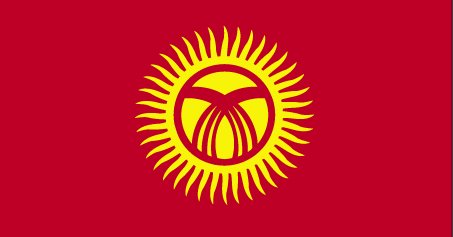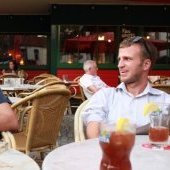Kyrgyzstan was the poorest republic of the Soviet Union and in 1991, became a small independent country on the extreme oriental border of the Kyrgyz steppe, with 4 million people. Most of its surface is covered by mountains and there are peaks over 7,000 meters that separate the country from the west Chinese desert (where last year Uyghurs rioted). The capital, Bishkek, was built by Soviets on the plain near the border with Kazakhstan and has nice tree-lined avenues that perpendicularly cross horrible Soviet condominiums and administrative buildings. The other plain is located in the Ferghana valley, on the west borders of the country.
It was in the Ferghana valley, which was under attacks from Islamic fundamentalists during the 90’s, that a riot began and eventually extended to the whole country. The riot forced the president Kurmanbek Bakiev to flee and consequently, a new interim government led by opposition leader Roza Otunbayeva was established. The situation is still blurry, Bakiev has not resigned and has launched fervent proclamations from Jalal al Abad, the town where he took refuge. The new interim government has not yet managed to restore the order and in the capital there are still riots that caused the death of dozens of women and men.
The situation is Still Blurry
Usually we look at these episodes in a funny way: as sort of revolutions in banana republics. Bakiev got into power thanks to the Tulip Revolution in 2005. He overthrew the former president Akaev and promised to end the corruption in the country, when in fact he turned out to be worse than his predecessor. During the Bakiev era the opposition was strongly suppressed using arrests and censorship. Similarly to, or even worse than Akaev, he turned out to be more corrupted than his predecessor: the new president gave public enterprises to relatives and friends and stole from public accounts (in this affair Italy was in fact involved: Bakiev’s economic advisor was the Russian-American Evgenij Gurevitch, involved in the scandal Ebiscom-Telecom Italian Sparkle).
It could be easy to predict that the new Kyrgyz leadership, as soon as it secured its power, will behave in the same way as Bakiev.
We should avoid however, to consider this revolution as weird, cyclic and actually not relevant for Europeans
Controversial Issues
We should avoid however, to consider this revolution as weird, cyclic and actually not relevant for Europeans. Not only for the reason that, as in 2005, today’s riot has been cruel (at least 76 people died) but also because in the country there are important controversial issues that we should not underestimate. There is the tension between the United States and Russia, which both have military bases in the country (the American base is particularly important for the war in Afghanistan). Furthermore, there is the game that India, China and Pakistan play and that we, as Europeans, cannot understand. Finally, there is the problem of Islamic terrorists, who are trained abroad and find easy fuel in the contradictions within the country. On one hand, it is true that Saudi Arabia funds gloomy mosques everywhere in the country, but on the other hand it is also true that the establishment in the capital is not very interested in the provinces (indeed it is not a coincidence that the riot started in Talas).
The Revenues of the State are Secured by the Company Active in the Gold Field
The internal contradictions are not less important. I recall just few of them. The revenues of the state are secured almost exclusively by the company active in the gold filled Kumtor and that itself constitutes a fundamental element of the Kirgiz political life. The relatively rich capital, where you can see big off-road vehicles from members of the government or from foreign officials, has nothing to do with provinces, where people move by horse and live in felt tents. Finally, a potential problem lies in the ethnic composition where there are differences between Russians and Kyrgyzs.
All these Features Together make the Situation not Cyclical, but in Continual Evolution
The problem is the following: how long could we ignore, as Europeans, the evolution of this situation (which is in fact similar to those of other neighbouring countries), before that the whole area develops in a critical direction, maybe like in Afghanistan, or before that China (or India or Pakistan) lay its hands on the country?


Follow the comments: |
|
